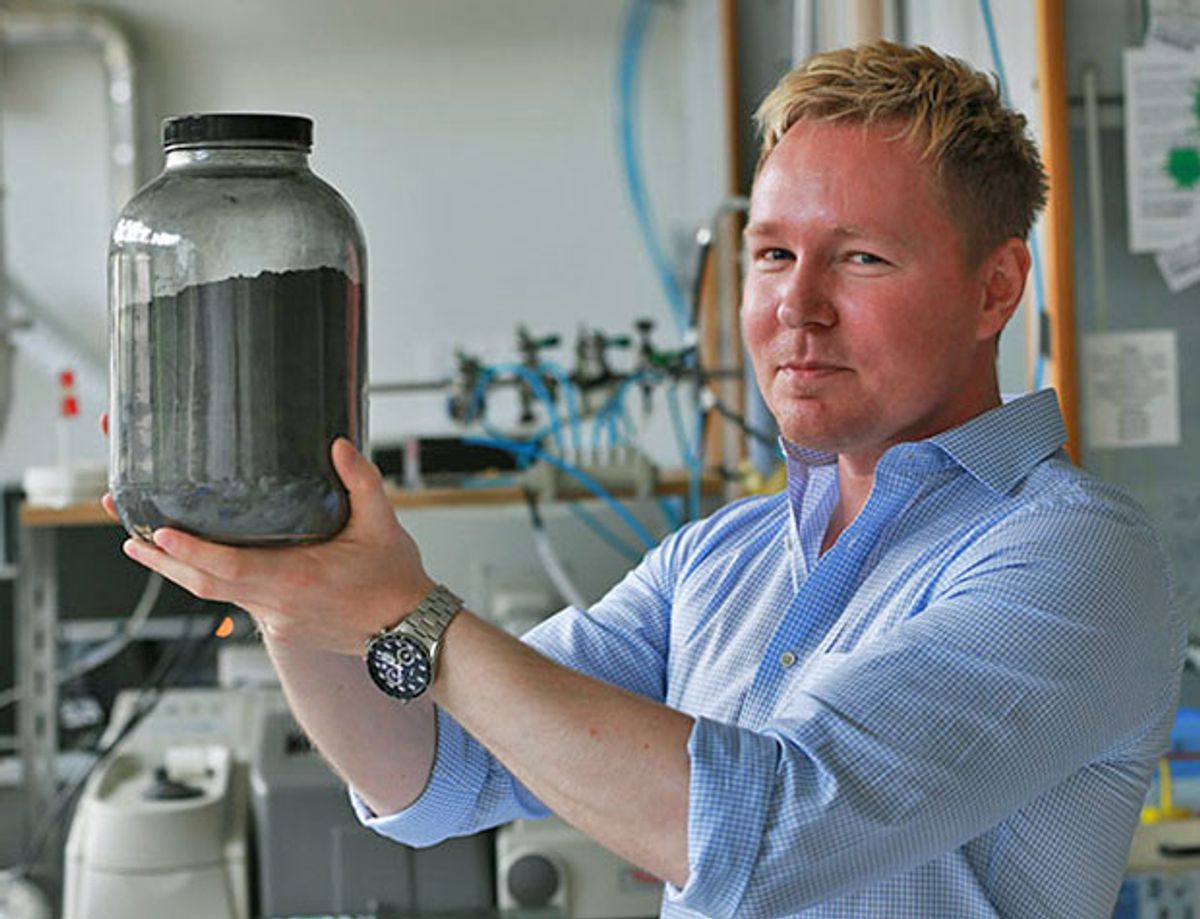Molecular electronics are a long-proposed—and sometimes forgotten—aim for electronics. The field promises a time when the basic building blocks of electronics are individual molecules. But a reliable method for testing these molecular components has remained elusive.
Now a joint research team comprising chemists and physicists from the Department of Chemistry Nano-Science Center at the University of Copenhagen and the Chinese Academy of Sciences in Beijing has developed a graphene-based chip whose initial application could be testing the molecular chips researchers envision.
The research (“Ultrathin Reduced Graphene Oxide Films as Transparent Top-Contacts for Light Switchable Solid-State Molecular Junctions”), which was published in the Wiley journal Advanced Materials, claims to be the first time that a transistor composed of just one molecular monolayer functioned on a chip.
While Kasper Nørgaard, an associate professor of chemistry at the University of Copenhagen, believes that the first applications for the graphene-based chip will be in testing future molecular electronics, the chip itself represents a first step towards integrated molecular circuits.
“The difference between this work and “graphene transistors” in general is that we use a molecular monolayer as the active (switchable) layer between a graphene electrode and a gold electrode, i.e. we are working in the field of molecular electronics in combination with graphene electronics,” Nørgaard explained to me in an e-mail. “The advantage of this molecular approach is that molecules can be tailor-made to provide a variety of interesting functions with tunable properties—in this case the ability to switch conductance as a function of light irradiation.”
The sandwich-like structure's ability to operate by light impulses that turn the molecular transistor on and off is enabled by graphene’s translucent qualities.
In fact, work aimed at chemically forming atomic-scale bones between graphene and a gold substrate, reported on this week by Aalto/Utrecht research groups, could help Nørgaard and his colleagues improve the reliability of molecular devices where the electronic function is governed by a single molecule.
According to Nørgaard, the central obstacle in developing molecular ICs relates to the relatively limited stability of molecules under typical IC processing conditions—in particular, the propensity of direct vapor deposition of metallic electrodes onto molecules to result in shorts.
“We have shown that by using a graphene layer on top of the molecules as a barrier, the molecules remain intact when metallic electrodes are deposited,” Nørgaard said to me in his e-mail. “Additionally, the graphene in itself serves as an electrode (due to the high conductivity of graphene) and therefore obviates the need for an additional metallic top electrode." Nørgaard adds that "since graphene is highly transparent, we show that it is possible to address and alter the state of the underlying molecular layer with light. We still need to apply these principles in large-scale ICs, and we are also constantly on the lookout for new molecular systems with novel functionality.”
This new chip should bring an entirely new level of precision to IC formation by enabling the precise placement of the molecules rather than essentially just pouring them out of a beaker. With this chip, molecular wires, diodes, and contacts can now be tested quickly to determine their characteristics.
“We’ve made a design that’ll hold many different types of molecule,” Nørgaard says in the release. “Because the graphene scaffold is closer to real chip design, it does make it easier to test components. But of course it’s also a step on the road to making a real integrated circuit using molecular components. And we must not lose sight of the fact that molecular components do have to end up in an integrated circuit if they are going to be of any use at all in real life.”
Image: Jes Andersen/University of Copenhagen
Dexter Johnson is a contributing editor at IEEE Spectrum, with a focus on nanotechnology.



